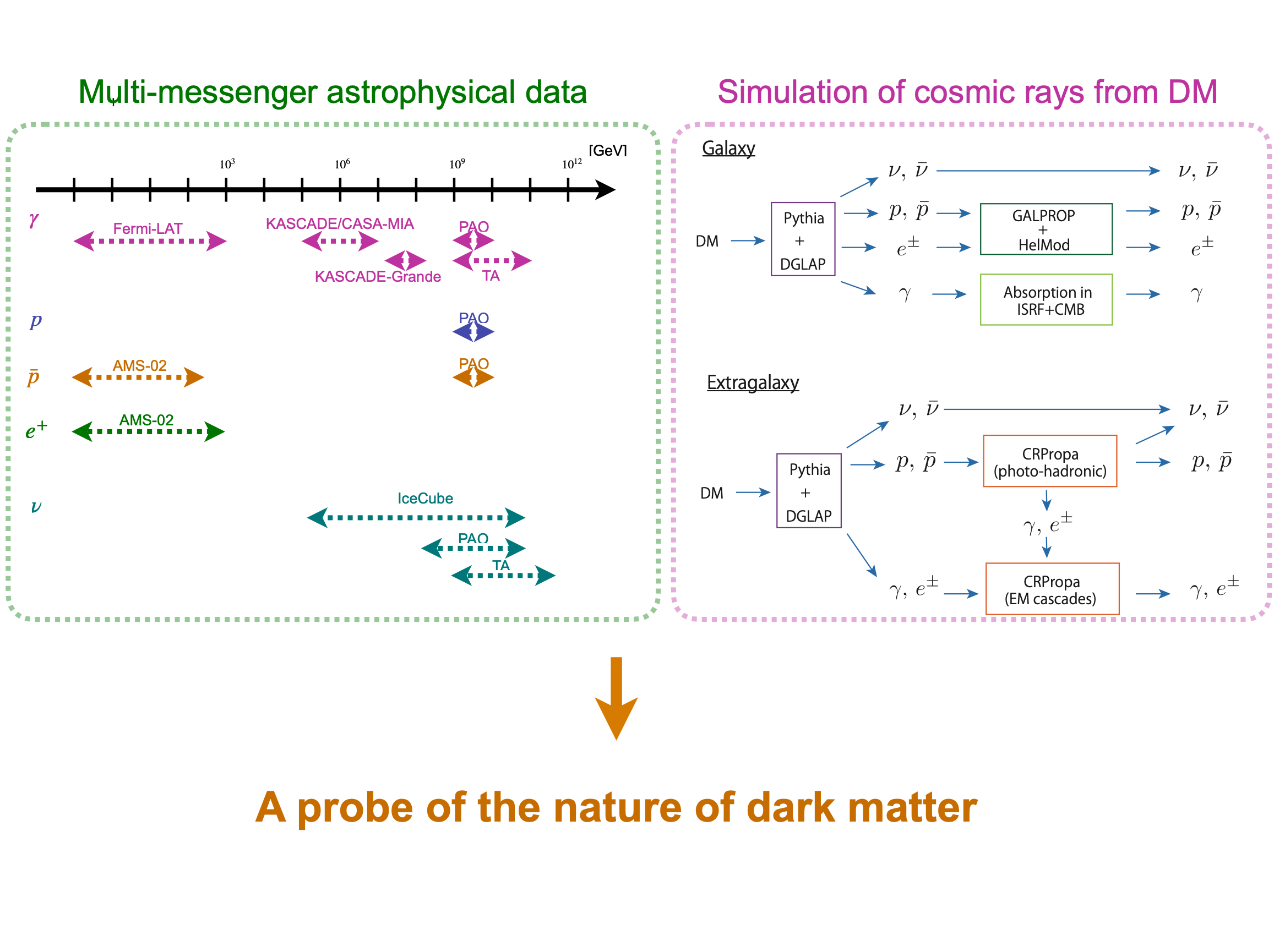Abstract:
The existence of dark matter is one of the mysteries of the Universe. This work shows that the multi-messenger astrophysical data is a powerful tool for probing the nature of dark matter.
Although the Standard Model of particle physics is quite successful to describe phenomena below the energy scale of Terra-electron volts, there are several observational facts pointed out that are inconsistent with the Standard Model in astrophysics and cosmology. Dark matter is one of the issues. Although it is evident that dark matter exists in the Universe, we don’t know what dark matter is. In our work, we focus on the cosmic rays that are observed by the satellites and ground-based observatories.
The observed cosmic rays consist of protons/anti-protons, electrons/positrons, gamma-rays, and neutrinos/anti-neutrinos. Most of the cosmic rays are considered to be originated from the astrophysical processes. In other words, the cosmic rays are “messengers” of those astrophysical processes. Recently, those cosmic-ray particles are detected in a very wide range of energy scale. Namely we have the information of cosmic rays with various kinds and energy nowadays to reveal the astrophysical processes far from the Earth. It is called “multi-messenger” astrophysics. Our idea is to make the most of the multi-messenger astrophysics to discover the nature of dark matter.
We have simulated cosmic rays from dark matter in both the Galaxy and the extra-galactic region and compared with a complete set of the current observed results. Then it has been found that the gamma-ray and neutrino observations have the best sensitivity of discover the lifetime and mass of dark matter.
Several cosmic-ray observations are on-going and there are also future plans. Applying our work to the future results will enable us to get a better sensitivity to reveal the nature of dark matter.

Figure
Probing dark matter with multi-messenger astrophysical data.
Article
Probing heavy dark matter decays with multi-messenger astrophysical data.
Journal:Cosmology and Astroparticle Physics
Authors:Koji Ishiwata, Oscar Macias, Shinichiro Ando and Makoto Arimoto
DOI: 10.1088/1475-7516/2020/01/003
Funder
This work was supported by JSPS KAKENHI, the JSPS Leading Initiative for Excellent Young Researchers program, Sakigake 2018 Project of Kanazawa University, and World Premier International Research Center Initiative (WPI Initiative), MEXT, Japan.



 PAGE TOP
PAGE TOP